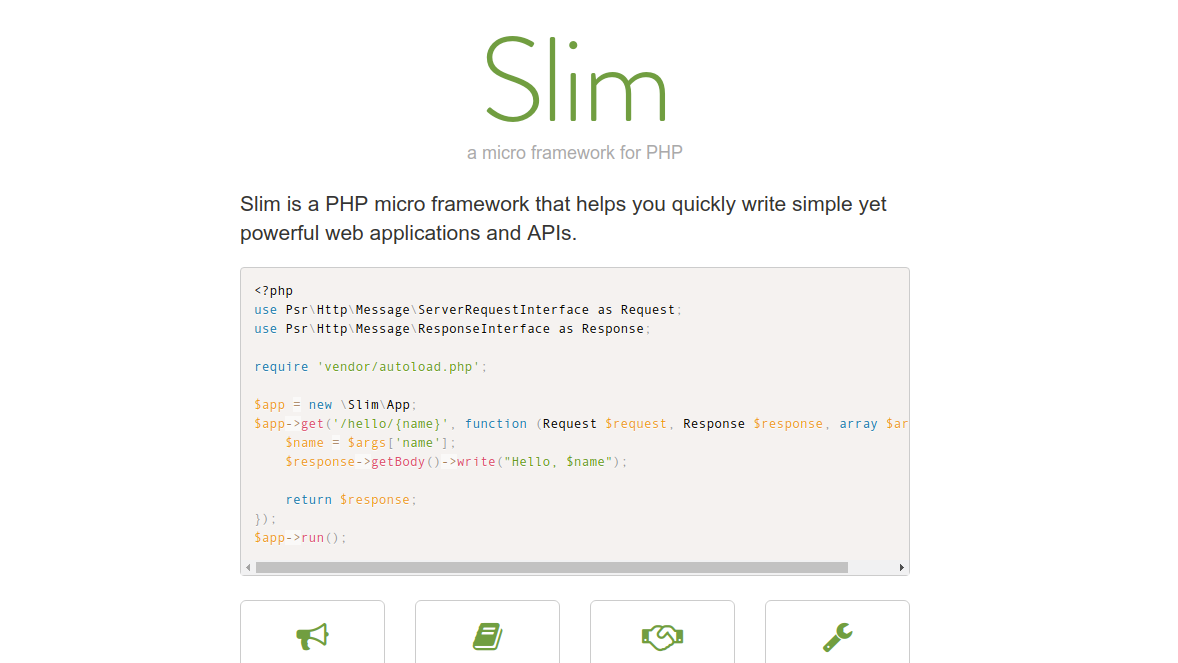I am using nginx server for this documentation.
First of all just choose a directory where you are gonna keep all your appliction files. Suppose, /var/www is going to be that directory.
Create a directory and rename it with yourapplication-name. Inside that directory just create few pre-planned directory and file structure like the following.
│ ├── routes ├── src ├── utilities ├── public ├── img ├── js ├── css ├── index.php ├── templates ├── composer.json
We will manage and install all the dependencies by our composer.json. And now let’s write which thins is gonna be used for our project and write down that in our composer.json file like following.
{
"name": "Project Name",
"description": "Project description",
"homepage": "Project URL",
"authors": [
{
"name": "Your name",
"email": "youremail@email.com"
}
],
"require": {
"php": ">=5.3.0",
"slim/slim": "dev-master",
"slim/views": "0.1.*"
},
"autoload": {
"psr-0": {
"": "src/"
}
}
}Now we need to run this composer. To install the above dependencies just run the following commands.
$ cd /var/www/yourapplicationdirectory $ php composer.phar install
If you haven’t composer.phar installed on your machine then just install it before running the above commands.
Now your project has all dependencies ready and it’s time to code inside your public/index.php.
For Slim Framework you can test your installation by writing the following code in your public/index.php file.
<?php
require '../vendor/autoload.php';
SlimSlim::registerAutoloader();
$app = new SlimSlim();
$app->get('/hello/:name', function ($name) {
echo "Hello, $name";
});
$app->run();Ohh yes, I forget to tell you about the nginx configuration for your application.
Just open nginx configuration file from /etc/nginx/sites-available/default and add the following default configuration in that file and restart nginx. You’re done.
server {
listen 80;
server_name yourapplication-name.dev;
root /var/www/yourapplication-name/public/;
access_log /var/log/nginx/yourapplication-name.access.log;
error_log /var/log/nginx/yourapplication-name.error.log;
location / {
index index.php;
try_files $uri $uri/ /index.php?$args;
}
location ~ .php/?(.*)$ {
fastcgi_connect_timeout 3s; # default of 60s is just too long
fastcgi_read_timeout 10s; # default of 60s is just too long
fastcgi_pass unix:/var/run/php5-fpm.sock;
fastcgi_index index.php;
include fastcgi_params;
fastcgi_param SCRIPT_FILENAME $document_root$fastcgi_script_name;
}
#Access phpmyadmin
location /phpmyadmin {
root /usr/share/;
index index.php index.html index.htm;
location ~ ^/phpmyadmin/(.+.php)$ {
try_files $uri =404;
fastcgi_pass unix:/var/run/php5-fpm.sock;
include fastcgi_params;
}
}
}Now change your hostname from /etc/hosts and add
127.0.0.1 yourapplication-name.dev
And now restart your network by $ sudo /etc/init.d/networking/restart and also restart nginx.
After that now open your browser and type yourapplication-name.dev/hello/yourname you can see hello yourname printed there.
Happy coding.



